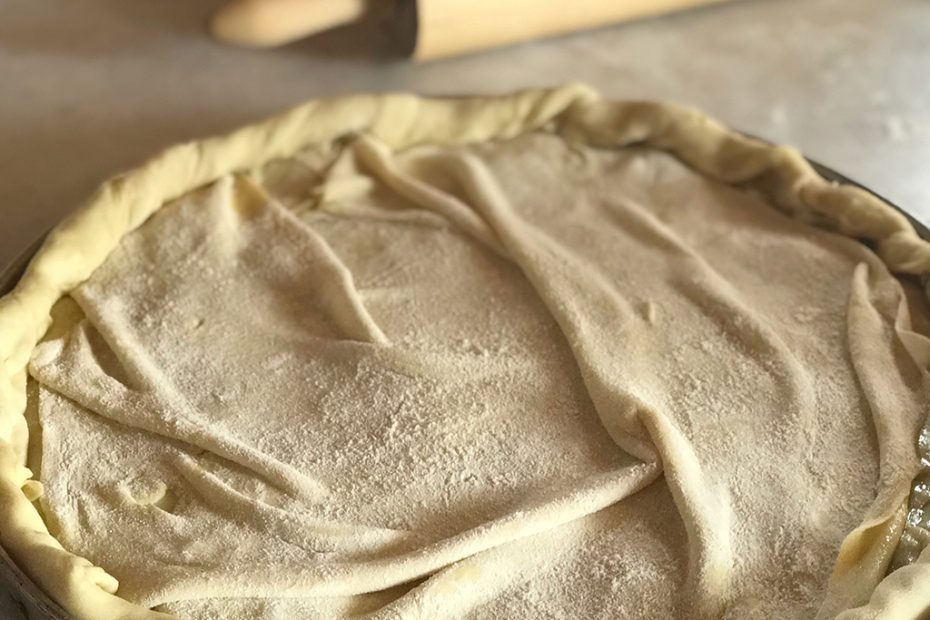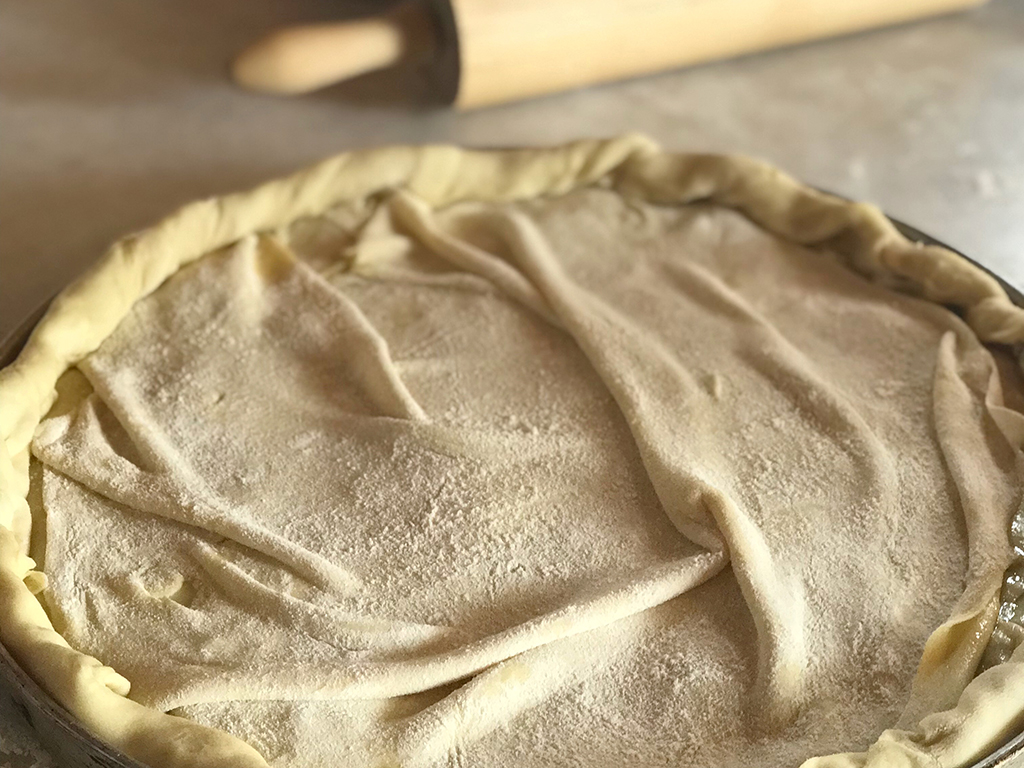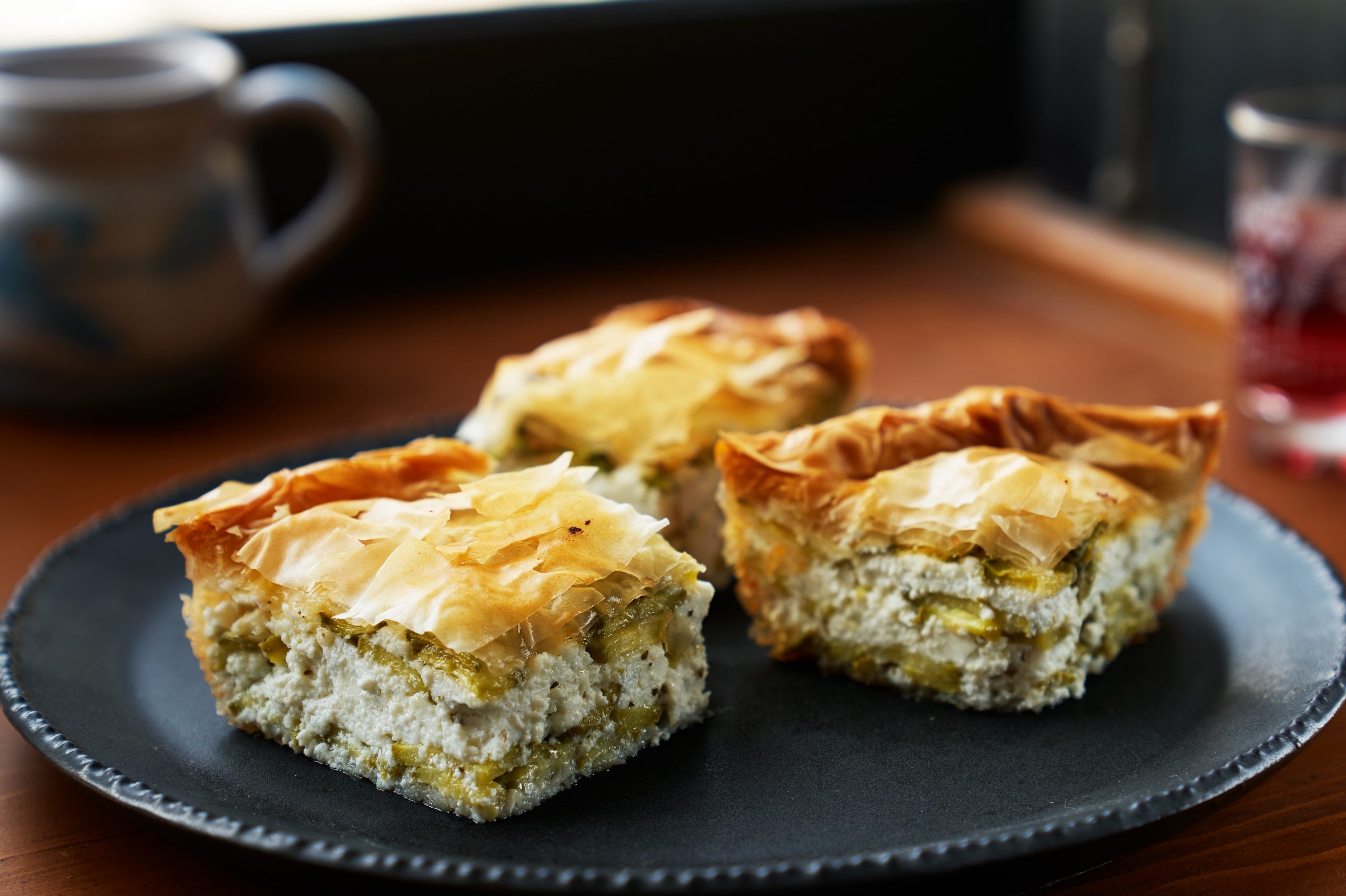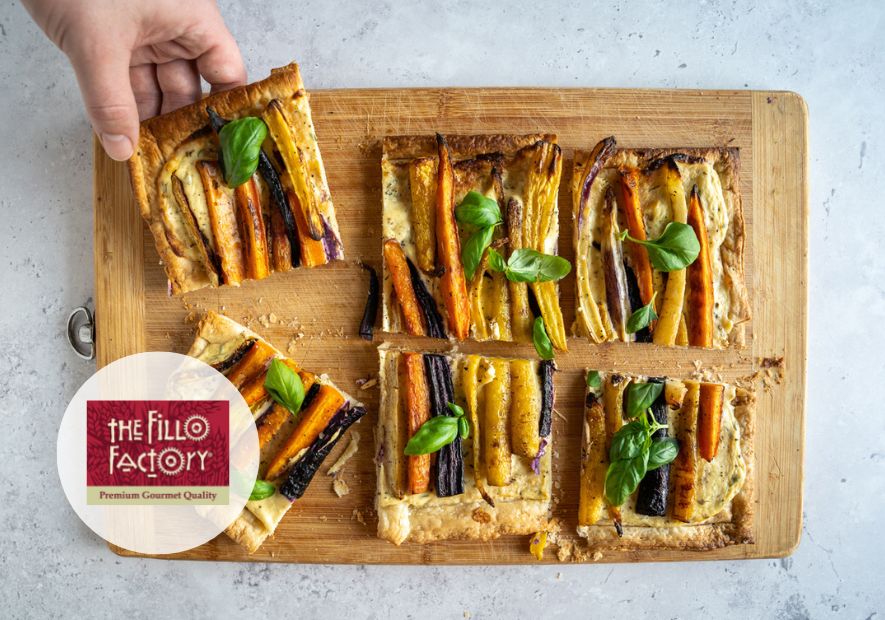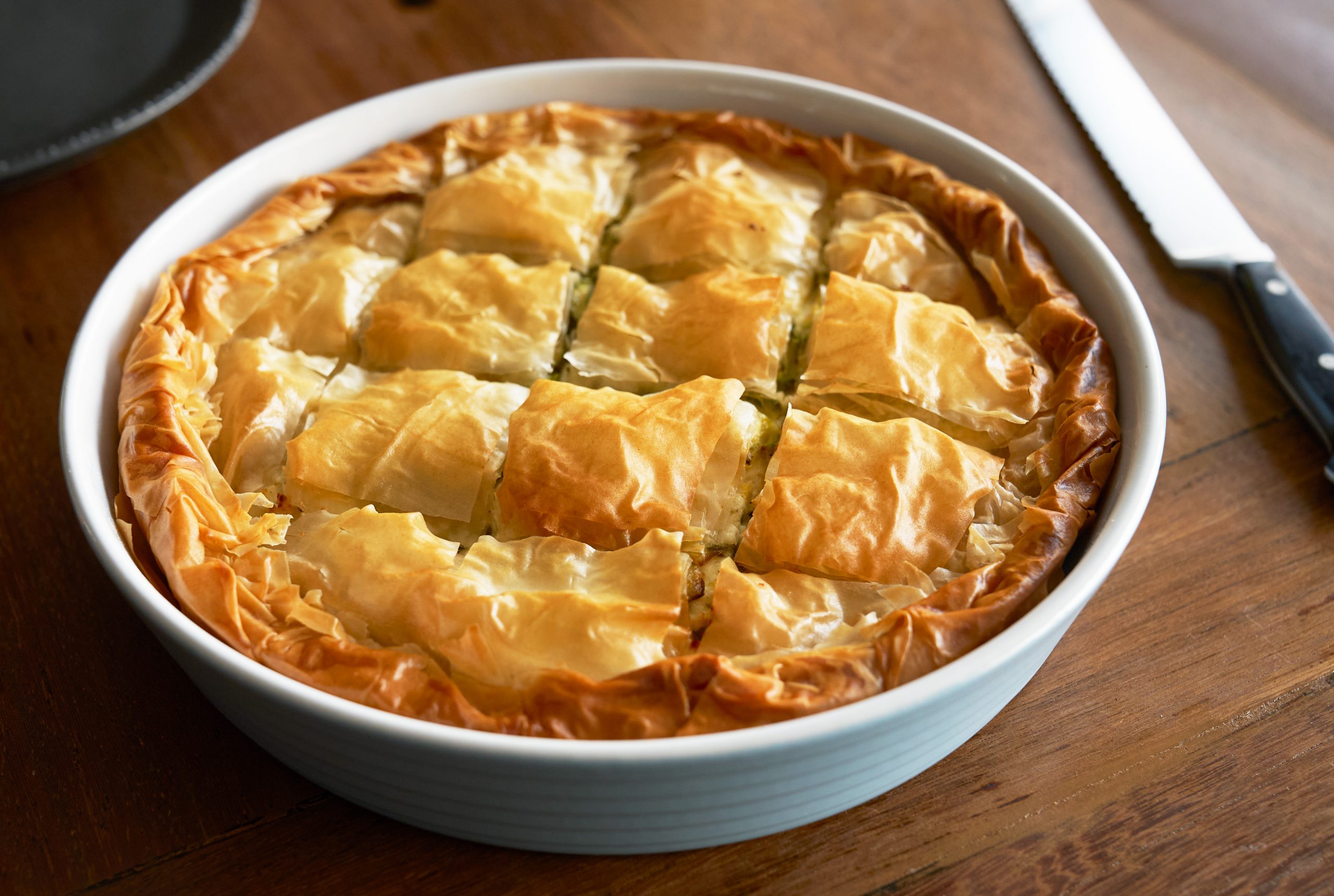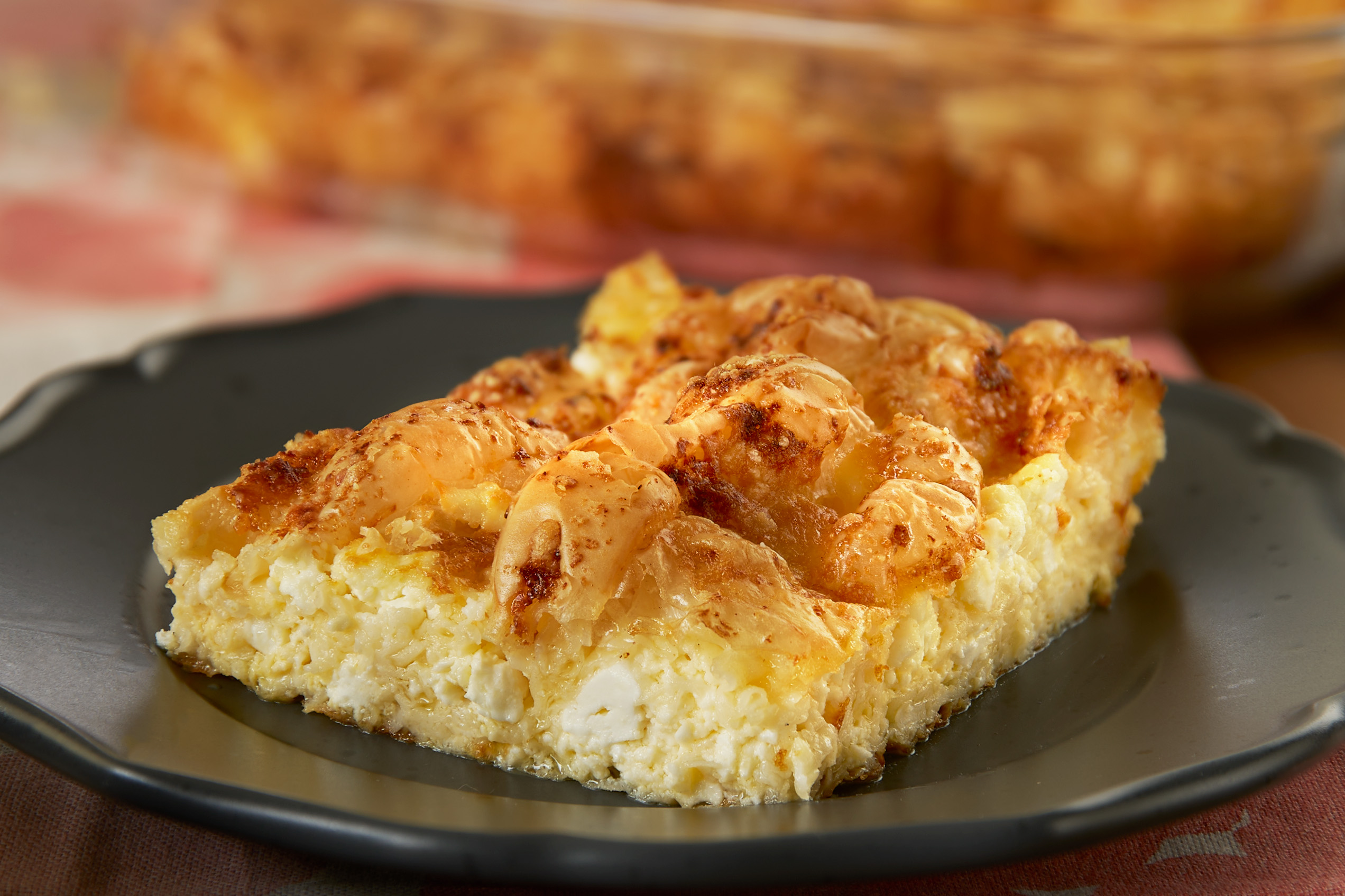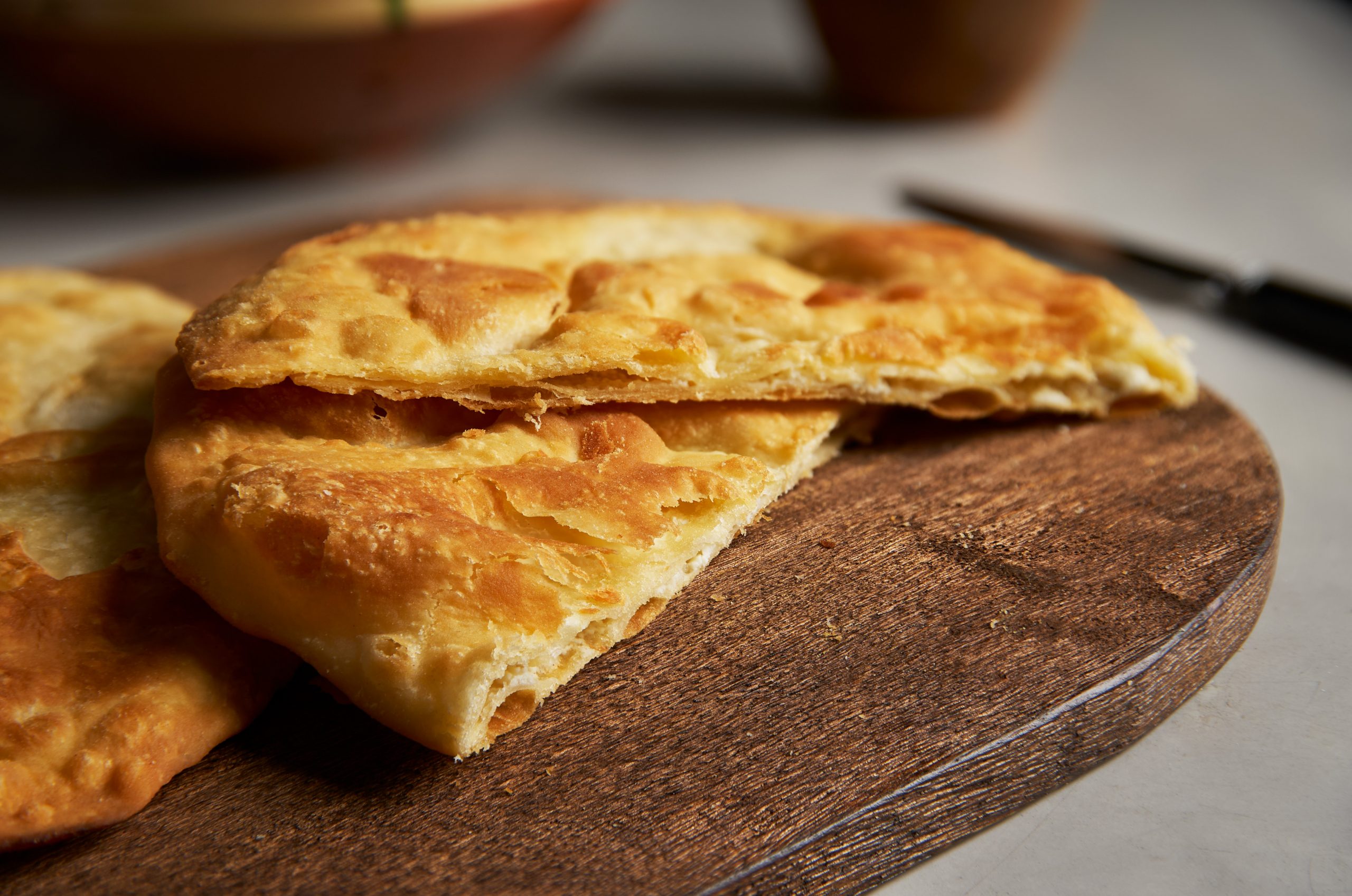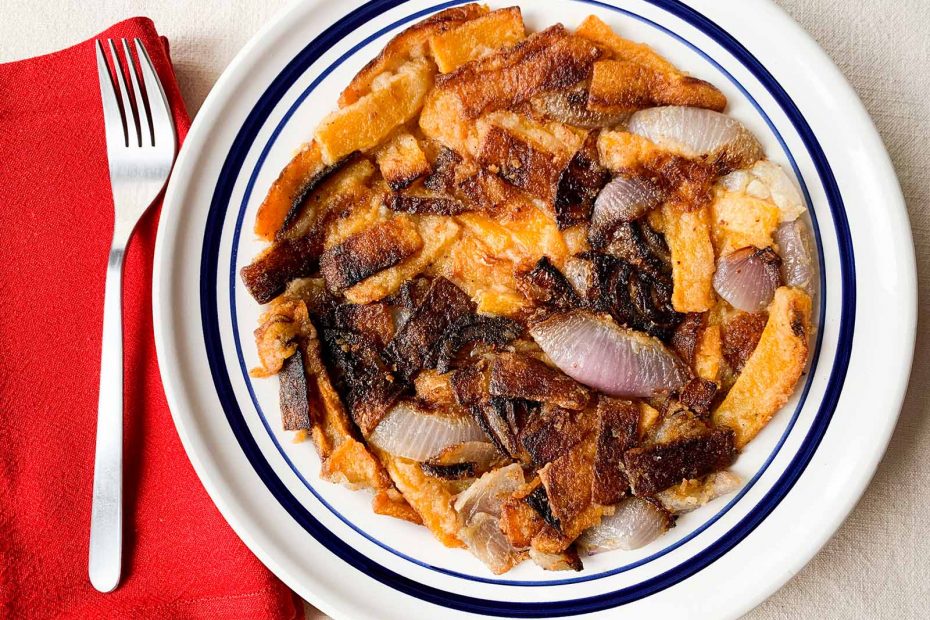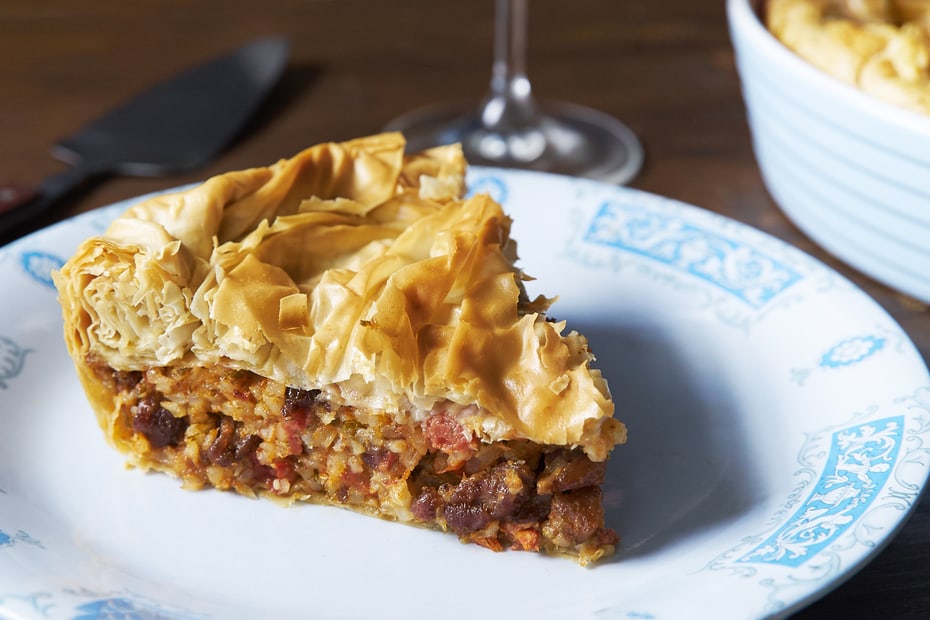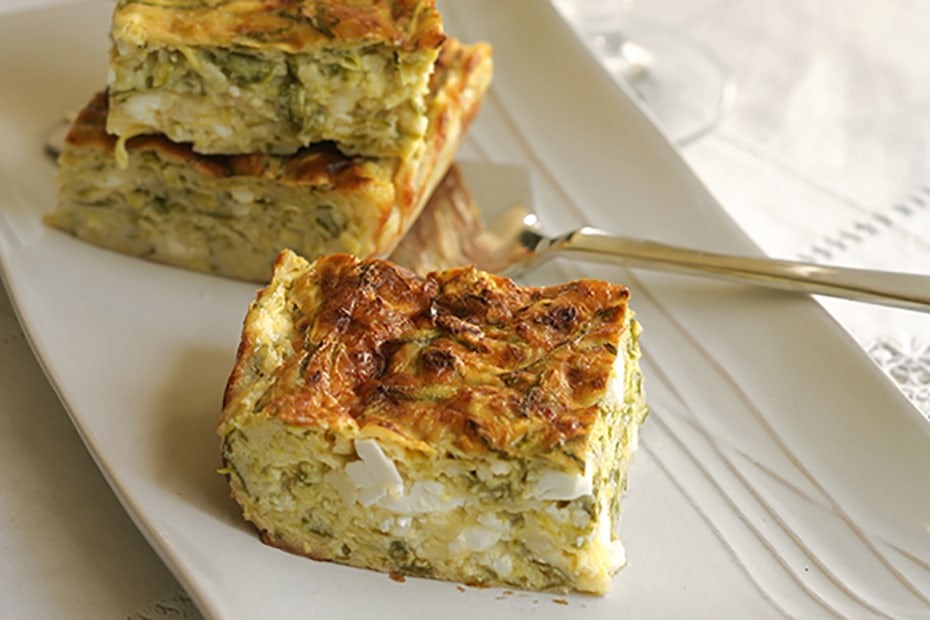When I get hungry in the middle of the day, there are so many Mediterranean diet lunches I depend on. There are great salads, of course, and a number of soups that come together in a flash. There are also tons of sandwiches – the ones I make always lean on my favorite Greek ingredients too!
But perhaps nothing makes a more satisfying lunch than a delicious Greek pie – and since it’s National Pi Day, of course it’s the only dish on my mind! They’re the perfect lunch option no matter where your kitchen is. A Greek pie is pairable with myriad soups and salads, in part because there are countless ways to make them and fill them.
First, let’s talk about the phyllo. I know for many, this is the biggest roadblock to making Greek pies a part of your weekly recipe rotation – but don’t let it deter you! Yes, homemade phyllo is great, but you can also find commercial, store-bought varieties that will be just as satisfying.
But say you decide to go the handmade phyllo route. In Greece, it is a hearty pastry, almost like pizza dough in texture, but usually without leavening. You can try my recipe for homemade phyllo here. If you’re tasting pies around the country, you might find that there are slight regional variations when it comes to making phyllo. For instance, in Crete, there might be a little tsikoudia (a grape distillate like grappa) added into the mix, or if you’re in the Ionian islands, yogurt is a common addition and makes the dough springy.
But in general, the recipe leans on a combination of all-purpose flour or semolina flour, olive oil, water, salt, and acid (like lemon juice or vinegar). And, like with many recipes perfected in various home kitchens over many years of practice, the ratio of these ingredients can differ depending on where you are and who you ask. I often add whole wheat to the mix, and am starting to experiment with almond flour and other gluten-free options, but have yet to come up with a recipe that satisfies me!
Next, we have to discuss fillings. You can pick anything. Really. The options are almost endless for savory pies: from classic spinach and cheese pies, to mouthwatering leek pies, to earthy mushroom pies, to pies stuffed with chicken or ground meat. And these are just a few of the options! You are almost certain to find interesting regional variations spread throughout Greece, so just know that nothing is off-limits, and everything tastes great wrapped in buttery phyllo.
You can even pick from a variety of shapes! They can fill up a whole pan, they could be rectangular, triangular, coiled or round; some are hand-held, and there are even phyllo-less options that you have to taste to believe.
Versatility is really the name of the game when it comes to this perfect Mediterranean diet lunch. It’s oh-so-easy to work with phyllo, both commercial and homemade, and it’s fun to pick the filling that fits your cravings. Scroll down for 8 of my favorite Greek pie options for a filling and healthy lunch.
Phyllo Pie With Zucchini, Feta & Mint
This savory phyllo pie with zucchini, feta and mint is an absolutely ideal lunch, but it can be enjoyed for breakfast or even at dinnertime – I’d also advocate for it as a perfect way to enjoy the Mediterranean diet on the go. I cooked it for a group of young artists and gallerists in Athens, during an episode of season 4 of My Greek Table.
Roasted Heirloom Carrot Cheese Pie In Fillo Factory Puff Pastry
Here’s a Greek pie idea that is as easy as it is beautiful. I use My Greek Table sponsor Fillo Factory’s puff pastry dough for this recipe. For me, this pie is a great chance to use delicious Greek cheeses, like manouri, mizithra, and Greek feta. Feta lovers will find this cheese will bring a little tang and pungency to the other mild Greek cheeses, and forms a nice balance for the sweetness of the carrots.
Chicken Phyllo Pie with Two Greek Cheeses and Herbs
Season 4 of My Greek Table was filled with great pies, and this is another of them. It’s an easy way to use up any leftover chicken you have in your fridge, and it calls for 2 Greek sheep’s milk cheeses, graviera and kefalograviera. Graviera is mild and nutter, while kefalograviera tends to be firmer and with a little more bite. Meaty, cheesy, filling, delicious – it’s the best lunchtime pie.
Pleated Phyllo Pie with Feta
I mentioned before that Greek pies come in all shapes, and this pleated phyllo pie (sometimes known as crinkle pie) is a perfect example – you simply have to bunch up the phyllo sheets as you lay the layers in the pan. It’s a very easy way to make a delectable Greek cheese pie. There are dozens of Greek recipes for cheese pies made with feta all over Greece, and many of them are from Epirus in Northwestern Greece.
Feta Cheese Skillet Pie
Cheese pie from a skillet? Oh yes! This pie, known in Greek as tiganopita, is a classic recipe from the cuisine of Epirus, a little like a pancake. You’ll find it’s super easy to make, so if you’re looking for a lunch that comes together in a snap, this is the best choice.
Savory Pumpkin-Onion Skillet Pie
I’d like to introduce you to one of my favorite Greek recipes ever, the pumpkin-onion skillet pie! It simply requires 2 basic ingredients, a good frying pan, and some quick reflexes, and you have a simple but elegant pie that makes for a really excellent lunch dish. This particular version is from Naxos; similar dishes are made in Samos and other parts of the North Aegean.
Kefalonitiki Kreatopita – Cephalonia Three-Meat Pie
Ok, this pie might be a bit indulgent, but it’s a truly delicious Greek pie! It’s also one of the most beloved dishes of the Ionian island of Cephalonia, starring 3 different ground meats, Greek cheese, and warm spices. You’ll love it for any meal.
Phyllo-less Zucchini Pie from Chalkidiki
Good news for the phyllo-afraid: there’s a phyllo-less way to make a zucchini pie! In some parts of Northern Greece, you’ll discover there are a number of Greek recipes for pies made with cornmeal or with greens instead of zucchini. The recipe relies on a thick batter, which you then bake in a well-oiled large baking pan. You’ll wind up with a delicious pie that should be about 2 ½ cm (1-inch) thick. It’s still a totally delicious, 100% Greek way to enjoy a good pie!
